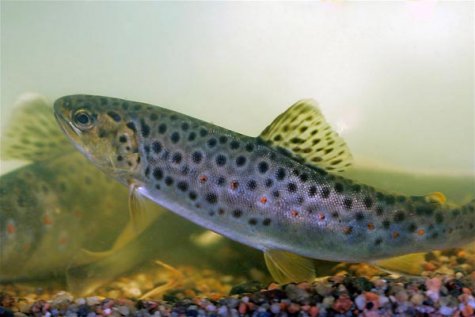Ban on salmon and trout fishing in rivers extended until November 25
Information from Ministry of Environment
Photo Tiit Hunt
Translation Liis
Trout
To protect salmon and trout the fishing ban period in Purtse, Selja, Pirita, Vääna and Valgejõel rivers has exceptionally been prolonged from the currently valid November 15th to November 25th.
Salmon and trout move into rivers to spawn in autumn and one prerequisite for breeding success is a sufficient water volume in the spawning rivers. Water has been extremely scarce this autumn and researchers estimate that the peak period of salmon and trout spawning had not even started as of November 9. Normally the amount of rainfall in Estonia in autumn is adequate to allow active spawning already from mid-October.
According to data on the Estonian Weather Institute home site water levels in all important spawning rivers for salmon and trout are below the long-term average for the month, and in several cases also below the long-time minimum.
The Estonian Marine Institute of the University of Tartu (Eesti Mereinstituut) and the Association of Viru County Coastal Fishermen (Virumaa Rannakalurite Ühing) proposed to the Estonian Ministry of the Environment to extend the ban on salmon and trout fishing to November 25th to prevent damage on the populations in the Purtse, Selja, Pirita, Vääna ja Valgejõe rivers.
The researchers note in their letter that the entry of salmon and trout into the rivers is 2 weeks later than last year due to the shortage of water in the rivers. If the ban period were to end on the usual date, i e on November 15th, many fish would be an easy catch for fishermen since the fish are easily caught in shallow water. An intense fishing during the peak period of spawning would however have a very deleterious effect on the numbers of the new generation.
Last year 290 permits were issued for salmon and trout fishing during November 16-25 in the Purtse, Selja, Pirita, Vääna and Valgejõe rivers. Considering the later spawning period of this year, permission for fishing on this scale would be seriously harmful to the stock of fish.









